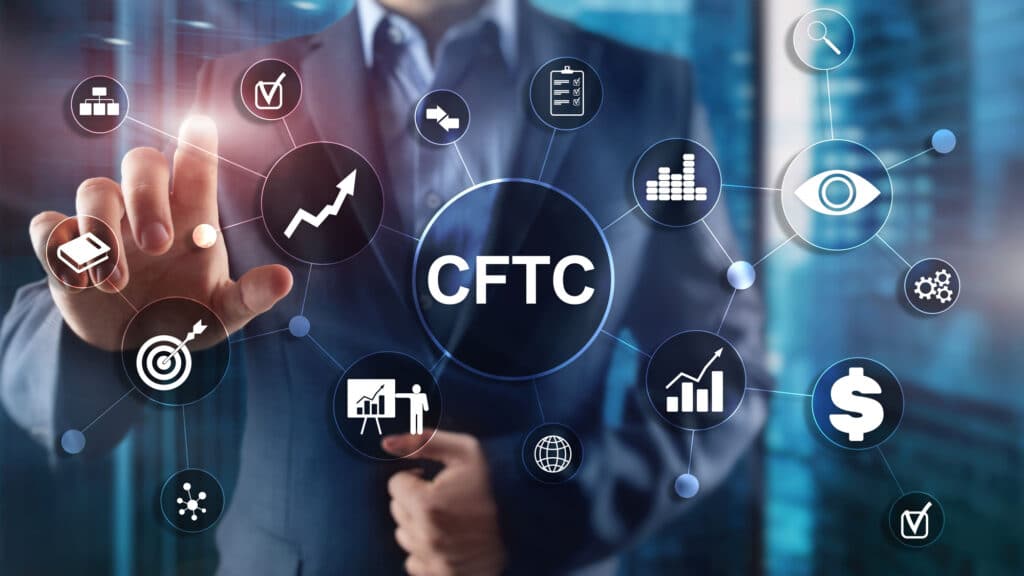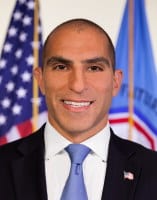
Rostin Behnam said in his final official remarks as chairman of the U.S. Commodity Futures Trading Commission that he will continue to advocate for the CFTC to close gaps in regulating spot markets for cryptocurrencies or digital assets.
Behnam will leave office on January 20 and his last day at the regulator will be February 7. In September 2017, he was confirmed as a commissioner under the Trump administration after working in the Senate as legal counsel for six and a half years. Behnam became president in September 2021.
He delivered a speech titled Commodity Derivatives Regulation: Where Do We Go From Here?, at the Brookings Institution on January 8, 2025 in Washington, DC. One of the early efforts that has dominated every season of his tenure is closing gaps in the regulation of spot markets for cryptocurrency or digital asset products.

Rostin Behnam, CFTC
“I repeated myself often and at every opportunity,” Behnam added. “My position has not changed, and I will continue to advocate for the CFTC to close this loophole if Congress desires, even after I leave office.”
He argued that even though the CFTC is a smaller agency, it generally has a sufficient number of people relative to the number of registrants and experts in the derivatives industry, which arguably constitutes the financial market the most complex.
“The United States has the largest markets in the world, and each part or segment of the market essentially has a dedicated regulator,” he said. “I know this frustrates a lot of people, but ultimately I think it’s a net positive because we need dedicated regulators for markets that are exponentially larger than any other market in the world.”
According to Behnam, regulation can shed light on something that would otherwise be dark and opaque, leading to the cream rising to the top. He said: “Everything else will disappear. »
The first Bitcoin futures and binary options contracts were self-certified in the United States in 2017 and Behnam said he called for more action to provide legal certainty to rapidly developing financial technology products such as cryptocurrencies.
There have been some targeted efforts, such as President Biden’s 2022 executive order to ensure responsible development of digital assets and the Financial Stability Oversight Council identifying the regulatory gap in spot markets for cryptoassets that are not titles. However, Behnam said the digital asset market has continued to integrate with traditional financial institutions without comprehensive regulatory guardrails.
“Concerns about customer protections, increased instances of fraud and market abuse, broader market resilience and even financial stability are intensifying in the absence of federal legislation,” he said. he added. “We’ve seen this before in our history, where we let large parts of finance escape oversight and accountability, and we’ve seen time and time again that it ends badly. »
As a result, Behnam argued that the CFTC needs rules that respond to current developments in the derivatives industry, as more entities seek to move away from traditional, familiar models. He warned that there is nothing inherently unreasonable or problematic about innovative approaches, but that regulators have a legal duty to proceed with integrity and determination. principles that prioritize customer protection, market stability and resilience.
LIBOR transition
Behnam highlighted some of the CFTC’s accomplishments during his tenure, including one of its first efforts as a sponsor of the Market Risk Advisory Committee. RMCA has focused on interest rate reform as regulators forced the abandonment of LIBOR, the benchmark rate embedded in hundreds of billions of dollars of financial contracts around the world.
After the financial crisis in In 2008, regulators discovered numerous cases of banks manipulating Libor for their own profit and defrauding the public. As a result, policymakers wanted markets to move toward new risk-free rates based on underlying transactions because they are harder to manipulate and more representative of the market. American regulators have chosen to replace Libor with SOFR (Secured Overnight Financing Rate).
LIBOR ended on September 30, 2024 with the final publication of the remaining synthetic LIBOR parameters.
“Encouraged by broad market participation in global cooperative and consultative efforts to successfully transition away from LIBOR, RMCA has contributed through the work of its Subcommittee on LIBOR Interest Rate Reform reference, which has driven the transition from LIBOR through various initiatives, including SOFR First,” added Beham. “The successful transition away from LIBOR has resulted in safer, more stable and more resilient financial markets. »
While he was chairman, the commission also issued a final rule on mandatory clearing of SOFR swaps.
Climate risk
RMCA’s Climate-Related Market Risk Subcommittee released the report, Managing Climate Risk in the U.S. Financial System in 2020, which Behnam said was the “first effort of its kind” by a U.S. government entity. Among the 53 recommendations, the climate risks report identifies carbon pricing as a fundamental element allowing financial markets to efficiently allocate the capital necessary to reduce greenhouse gas emissions.
Behnam was encouraged by the “tremendous support” for the climate risks report and created the CFTC’s Climate Risks Unit shortly after becoming its chairman, and organized two meetings on voluntary carbon credits (VCC ) in June 2022 and 2023. The CFTC has finalized its guidance on the listing of CCVs. derivatives in September 2024, which Behnam said was the first on standards for exchanges listing products aimed at providing tools to manage risk, promote price discovery and help channel capital to support decarbonization efforts.
“This action directly and in a targeted and responsive manner addresses the legitimacy barriers that have hindered progress toward sustainable and scalable voluntary carbon markets,” Beham said. “This, in turn, can promote accurate carbon pricing, reduce the vulnerability of listed contracts to fraud and manipulation, and promote confidence in the contract, which can improve liquidity. »
Data
The most important lesson regulators learned during the financial crisis is that markets are interconnected, according to Behnam. He said: “The common language, the connections that unite participants, practices and practicalities to everything we strive to achieve, is data. »
As chairman, he created the Data Division (DOD) by merging the CFTC’s IT department and part of the Market Surveillance Division. Shortly thereafter, he named a new chief data officer and DOD director and hired the CFTC’s first chief data scientist, who leads the development of new analytics services and tools for the agency, and whose tasks include upskilling staff to improve their analytics and artificial intelligence capabilities. . Over the past year, about 300 of the CFTC’s 700 employees have been trained in data science, programming or cloud-based tools.
After the appointment of The CFTC’s first AI lead, DOD launched its first annual strategic data and AI action plan, supported by an enhanced and increasingly cloud-based infrastructure.
“This game changer allows us to develop enterprise dashboards for entity-level risk analysis and modeling, market activity and liquidity analysis, and surveillance analysis and leverage the CFTC Data Hub, a centralized data cataloging tool,” Behnam said.
In December 2024, the CFTC team issued an advisory on the use of AI in derivatives markets.
Behnam concluded that innovation has changed modern methods of derivatives trading and that exchanges are now regulated. bear little resemblance to those that existed 50 years ago, when the first President of the Commission accepted his appointment, because technology is leading to more rapid change.
“Products and structures are evolving not only to meet the demand of a growing and diverse customer base in terms of geography, sophistication and goals, but also to attract participants from a broader population whose interest is piqued by the promise of financial inclusion and prosperity. made possible by the ease of access to regulated markets through technology,” he said. “To this end, we find ourselves increasingly poised to make decisions that go beyond our historical roots in agricultural markets and place us at the threshold of the expansion, transformation and sometimes increasing gamification of derivatives markets . »





